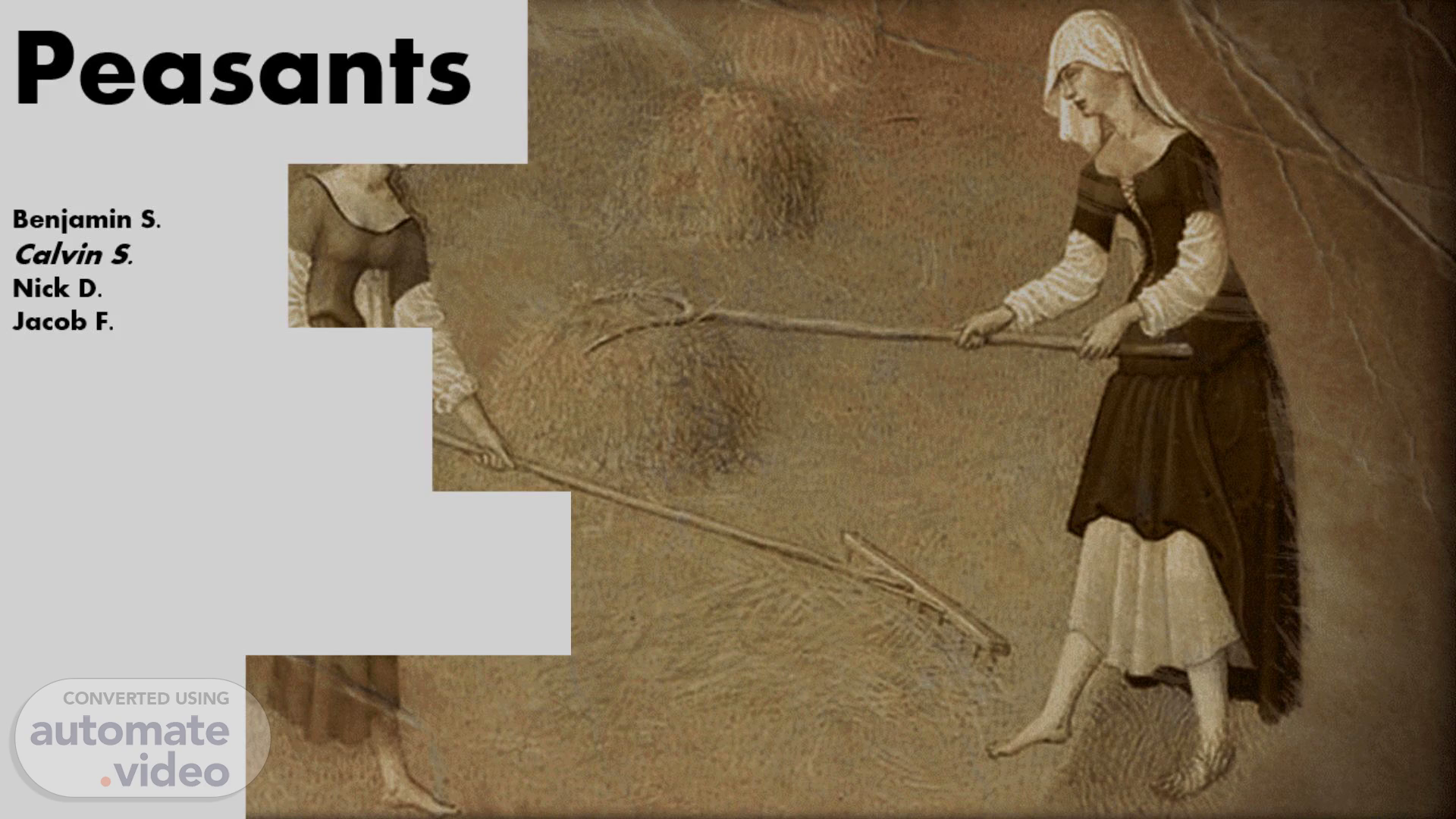
PowerPoint Presentation
Scene 1 (0s)
[Audio] Peasants, Created by Benjamin Smith, Calvin Spano, Nick Davis, Jacob Frecklington.
Scene 2 (11s)
[Audio] Slave life varied greatly depending on many factors. Life on the fields meant working sunup to sundown six days a week and having food sometimes not suitable for an animal to eat. Plantation slaves lived in small shacks with a dirt floor and little or no furniture. A minimum of 61% of the field slaves were women who farmed, harvested, and built fences around the Estate. Slaves who were physically disabled in some ways were often given less demanding jobs such as creating clothing or shoes or picking seeds of wild onions out of the oat seeds. Political economists clearly show the two. A peasant was a smallholding subsistence farmer or a tenant farmer not relying on a wage. An enslaved labourer was legally chattel and worked for the benefit of his or her putative owner. According to the Domesday Book, over 10% of England's population in 1086 were slaves. While there was no law against slavery, William the Conqueror introduced a law preventing the sale of slaves overseas. unfree labour, with no rights, that could be sold. William did not ban the practice; he banned the export of English slaves. In the British colonies the slaves were treated as non-human: they were 'chattels', to be worked to death as it was cheaper to purchase another slave than to keep one alive. Though seen as non-human, as many of the enslaved women were raped, clearly at one level they were recognised as at least reputable human beings..
Scene 3 (1m 48s)
[Audio] Most peasants worked on farms whether slaves, or in this case, free. The freemen would receive low pay and low rent and lived on little food and in harsh conditions. The houses of these slaves were low quality and had little light and ventilation with commonly earth floors. The responsibilities of the free peasants included, tending to the land, killing and farming livestock and paying rent, as they weren't enslaved, the peasants weren't necessarily forced by anyone to do this, however they had to if they wanted to survive. The peasants were the lowest in the social hierarchy and were intitled to little other than land which they were given to them by the king in exchange for produce and rent. In medieval society peasants were the primary farmers of the society and were given the right to farm by the king. Peasants would supply the kings and nobility with food and produce which was how they would make their limited income. Other than this the nobility would commonly have peasant workers (commonly slaves) which they would exploit for profit..
Scene 4 (2m 54s)
[Audio] Cotters are a type of peasant or farm labourer who lives in a cottage and watches over the land. Cotters were of lower rank than the villeins, did not possess leaseholds and worked for more prosperous villeins or for the feudal lords in exchange for food. Wage earners worked on all feudal estates and received a payment in exchange for their labour. The Cotters would help the hierarchy by occupying a cottage and sometimes owning land in exchange for services from people higher up in the hierarchy. The cotters would contribute to society by watching over the land and occupying cottages. The cotters would interact with other social by working for the king and listening to the higher up social groups..
Scene 5 (3m 34s)
[Audio] Villeins grow and harvest food for themselves and those above them in the hierarchy The villeins were in-between the slaves and the freemen in the hierarchy Provided food and resources for those higher up on the hierarchy Villeins specifically would interact with lords and nobles.
Scene 6 (3m 51s)
[Audio] Thanks for listening. Medieval Peasants: Who Were They And What Did They Do? - Age of Empires.